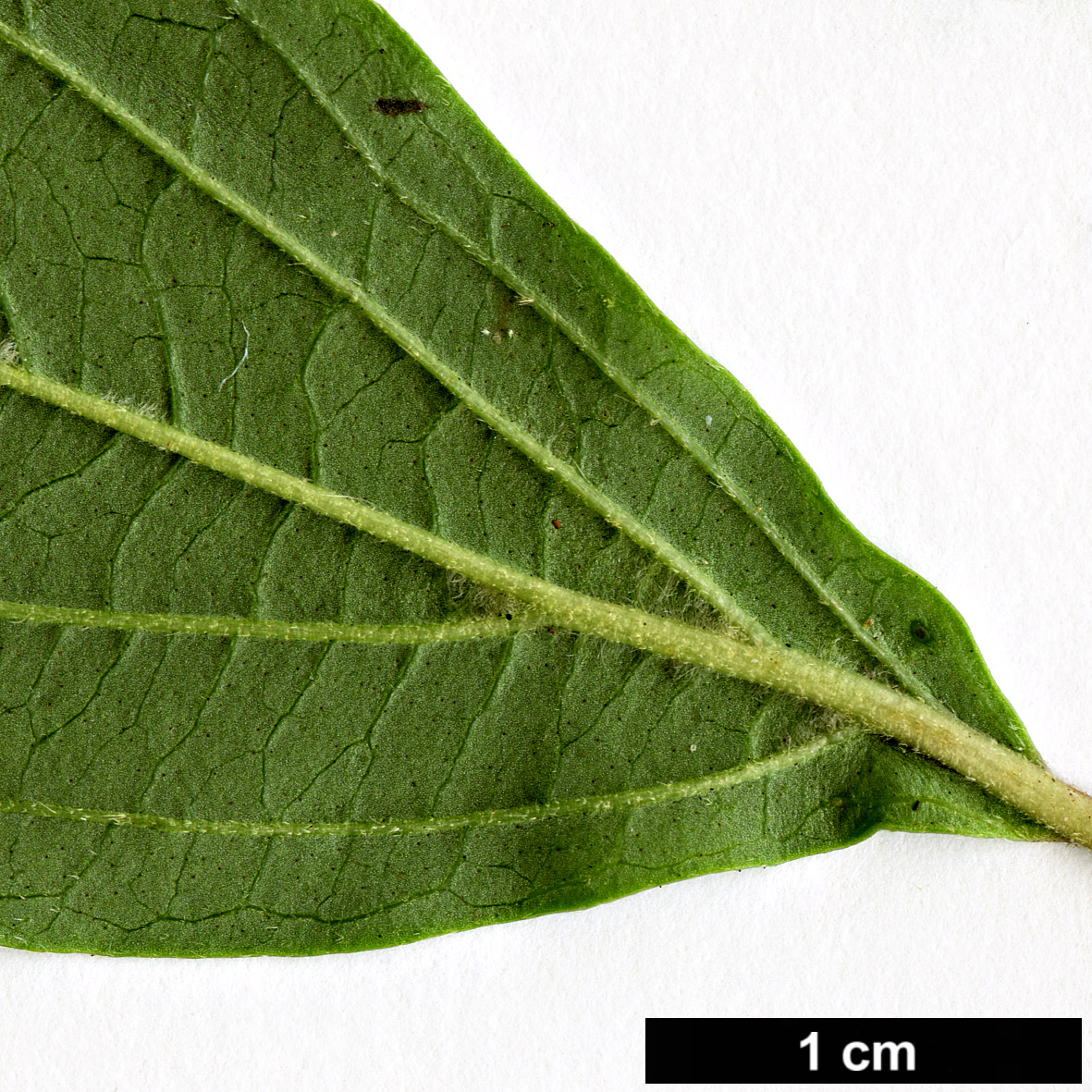Viburnum foetidum
Credits
Article from Bean's Trees and Shrubs Hardy in the British Isles
Recommended citation
'Viburnum foetidum' from the website Trees and Shrubs Online (treesandshrubsonline.
Genus
Synonyms
- V. ceanothoides C. H. Wright
- V. foetidum var. ceanothoides (C. H. Wright) Hand.-Mazz.
- V. rectangulatum Graebn.
- V. foetidum var. rectangulatum (Graebn.) Rehd.
Other taxa in genus
- Viburnum acerifolium
- Viburnum betulifolium
- Viburnum × bodnantense
- Viburnum buddleifolium
- Viburnum burejaeticum
- Viburnum × burkwoodii
- Viburnum × carlcephalum
- Viburnum carlesii
- Viburnum cassinoides
- Viburnum cotinifolium
- Viburnum cylindricum
- Viburnum davidii
- Viburnum dentatum
- Viburnum dilatatum
- Viburnum erosum
- Viburnum farreri
- Viburnum grandiflorum
- Viburnum harryanum
- Viburnum henryi
- Viburnum hupehense
- Viburnum japonicum
- Viburnum kansuense
- Viburnum lantana
- Viburnum lantanoides
- Viburnum lentago
- Viburnum macrocephalum
- Viburnum molle
- Viburnum nudum
- Viburnum odoratissimum
- Viburnum opulus
- Viburnum phlebotrichum
- Viburnum plicatum
- Viburnum propinquum
- Viburnum prunifolium
- Viburnum rhytidophyllum
- Viburnum rigidum
- Viburnum rufidulum
- Viburnum schensianum
- Viburnum setigerum
- Viburnum sieboldii
- Viburnum suspensum
- Viburnum tinus
- Viburnum utile
- Viburnum veitchii
- Viburnum wilsonii
- Viburnum wrightii
A semi-evergreen shrub up to 10 ft high; young shoots angular and reddish, downy, the hairs either simple or clustered. Leaves 1 to 3 in. long, about half as wide, either broadly ovate with a rounded base and more or less trilobed towards the apex, or, on the older shoots, varying to broadly lanceolate and obovate, coarsely toothed, more or less finely downy, especially on the three or four pairs of veins and the reddish stalks. Flowers individually stalkless, in rounded branched clusters 2 in. wide, opening in July, each about 1⁄4 in. wide; petals white, anthers violet. Fruits closely packed, scarlet-crimson, broadly oval to orbicular, 1⁄4 in. wide. Bot. Mag., t. 9509.
Native of northeast India and Bhutan, northern Burma, and of western and central China. Probably the first introduction was by Wilson from W. Szechwan, but seed was later sent by Forrest from Yunnan. The fine form that received an Award of Merit for its fruits when shown from Exbury in 1934 was raised from Forrest 27410, but this is not altogether hardy. There is, however, a compact and twiggy form in gardens which is hardy and was probably raised from seeds collected by Farrer. The specific epithet refers to the odour of the crushed leaves, still evident in century-old herbarium specimens. Being of wide range V. foetidum exhibits minor variations which it is pointless to categorise. Even on one and the same plant the foliage varies, leaves on strong shoots being often definitely three-lobed.



